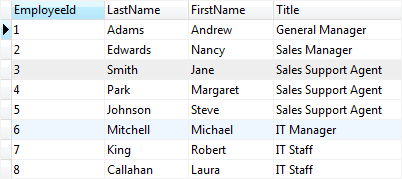
Q=f"INSERT INTO Student VALUES ('')"Ĭursor.execute("SELECT count(*) FROM Student WHERE name = ?", (name,)) # creating the insert query for each student Table_query = '''CREATE TABLE if not Exists Student

# it will create a databse with name sqlite.db Then we will use the fetchall() function to check if a row already exists in the SQLite table or not. Let us first create the table with SQLite database and insert some data in it. The fetchall() function in python is a built-in function that returns either a list with just one tuple in the list (e.g. Method No 1: Use fetchall() function to check if a row is already Exist in database In this article, You will learn about 3 different ways to check the existence of a row in an SQLite database in Python. You need to check if a row already exists in the database, then you simply do not want to insert it. You can view EDUCBA’s recommended articles for more information.Do you want to check if a row already exists in the database? Sometimes you might not want to store one row, multiple times in a database. We hope that this EDUCBA information on “SQL Order by Count” was beneficial to you. ORDER BY count(DISTINCT salesperson) DESC, count(product_id) ASC SELECT store_state,Ĭount( DISTINCT salesperson) as "total_salespeople" ORDER BY COUNT() statement with more than one count() functions Example #5įind the number of sales and unique salespersons for each store location, arranged from highest to lowest count of salespersons and from lowest to highest by number of sales in case of a tie. In this specific case, even though there are 11 product_ids, the count only includes 9 unique ones. When we use the DISTINCT keyword with COUNT, it returns the count of unique records in the specified column. SELECT salesperson, count( DISTINCT product_id) Example #4įind the number of different products each salesperson sells, arranged from lowest to highest. ORDER BY COUNT() statement with COUNT(DISTINCT field_name) function.

Example #3įind the number of sales made in each store location, arranged from lowest to highest. To sort a given result set in descending order, we use the DESC keyword. Example #2įind the number of sales each salesperson makes and arrange the result from highest to lowest. The query first groups the results by salesperson then counts the number of product_ids corresponding to each group and finally sorts the result set according to the value returned by the count() function. SQL queries to illustrate the basic functionality of ORDER BY COUNT() Example #1įind the number of sales each salesperson makes and arrange from lowest to highest. The COUNT() function returns the total number of rows in the result set. Now we are all set to discuss a few examples based on ORDER BY COUNT() with the help of the product_details table.īasic functionality of COUNT() function SELECT COUNT(*) Product_id, sale_date, sale_amount, salesperson, store_state) Let’s insert the following values in it to work with. Store_state character varying(255) NOT NULL, Salesperson character varying(255) NOT NULL, We can use the following CREATE TABLE statement to create the table. This table contains details about sales, such as product_id, sale_date, etc., for a departmental store. To illustrate the working of the ORDER BY COUNT() statement, let us create a dummy table named “product_details”. Now that we have learned the syntax and parameters for writing ORDER BY clauses, let’s explore a few examples to gain a better understanding of the concept. ASC | DESC: Order of sorting as in ascending(ASC) or descending(DESC).COUNT(column_name_2): We count the values of the column and then utilize them as input for the ORDER BY clause to sort the result set.



 0 kommentar(er)
0 kommentar(er)
